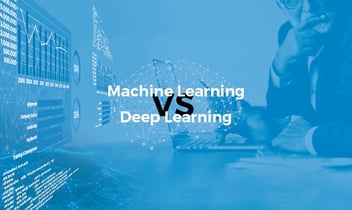Discover how leading companies are applying AI in predictive maintenance, healthcare, automation, and transportation to optimize their operations.
Artificial intelligence in business is no longer an exclusive resource reserved for technology experts; it has become a cornerstone in the transformation of numerous industries. Concepts such as generative AI, natural language processing for business, and predictive maintenance algorithms are increasingly integrated into the corporate landscape.
However, a recent Google Cloud study, The ROI of Gen AI, reveals that nearly one-third of organizations worldwide are still in the evaluation or testing phase of generative AI use cases.
The study, which surveyed more than 2,500 business and technology leaders, delivers a clear message: companies that are not adopting artificial intelligence today risk falling behind tomorrow.
But do companies truly understand how to leverage artificial intelligence, particularly its most innovative branches?
Discover 4 real AI applications that are revolutionizing the use of artificial intelligence in business and accelerating digital transformation. How can businesses harness AI effectively?
Beyond its most recognizable face, generative AI is the result of advancements in other key technologies—also branches of artificial intelligence—that, while less well-known, possess equal or even greater potential. These include deep learning, large language models (LLMs), natural language processing (NLP), and customized deep learning algorithms, among others.
Learn How a Manufacturing Company Reduced Downtime with Artificial Intelligence. See our Success Story: AI Query.
Success Story: AI Query
Discover how leading companies are making the most of their data using next-generation AI algorithms.
In this article, we explore 4 real-world examples of artificial intelligence in business that are transforming how companies operate and setting the pace for an increasingly data-driven future.
Discover 4 Real-World Examples of Artificial Intelligence in Business That Will Surprise You
1. AI in Transport: How a Transportat Company Optimizes Incident Classification
Intelligent Incident Classification in the Transport
Efficient incident management is a critical challenge for any transport company, where speed and accuracy in classification directly impact both user experience and service operations.
Traditionally, this process was performed manually, requiring significant time and resources and leaving room for human error.
To address this challenge, a leading transport company asked Bismart for help in automating incident categorization.
The goal was to enhance operational efficiency, optimize response times, and reduce the administrative burden on customer service teams.
The Solution: Implementing an AI Model for Automatic Incident Classification
To tackle this challenge, Bismart developed a custom AI language model using deep learning techniques.
- Use of advanced AI models: GPT-3.5, GPT-4, and a fine-tuned custom model were evaluated to enhance classification accuracy.
- Data preparation: Incidents from 2022 and 2023 were analyzed, selecting a training dataset of 29,122 incidents and a validation set of 8,736 records.
- Optimized prompt development: A standardized prompt was defined to ensure consistency in evaluations and minimize interference when comparing models.
- Model training and validation: A tailored model was implemented to align with the language and terminology specific to transport companies.
Key Results
The application of artificial intelligence in incident classification represents a significant advancement in optimizing operations for sectors with high information management demands.
AI models’ ability to interpret natural language, adapt to industry-specific terminology, and improve over time through supervised learning enables organizations to reduce errors, streamline processes, and enhance service quality.
2. Predictive Maintenance with Artificial Intelligence: Reducing Costs and Downtime
Minimizing Downtime Through Predictive Maintenance and AI Automation
Companies in the renewable energy sector, particularly leading wind power producers, rely on the continuous operation of their infrastructure to ensure the production and profitability of their assets.
However, maintaining wind turbines presents a significant challenge: any mechanical or electronic failure can lead to prolonged downtime, with lengthy recovery times due to the complexity of access, fault repair, and system reactivation.
In this context, a leading renewable energy company sought a solution to anticipate failures and reduce operational interruptions across its wind farms.
How to Implement an AI Model for Predictive Maintenance
The Solution: Implementing an AI-Based Predictive Maintenance System
To address this challenge, Bismart developed a predictive maintenance model powered by artificial intelligence and machine learning. The solution involved:
- Analysis of existing data: Operational data, historical failure records, and environmental conditions were analyzed to identify patterns and relationships between variables.
- Data mining and machine learning: Advanced AI techniques were used to detect correlations and trends indicating potential failures before they occurred.
- Operational predictive model: A machine learning algorithm was trained to predict failures in advance, enabling preventive maintenance and minimizing unexpected downtime.
The system was initially implemented as a proof of concept (PoC), analyzing a representative subset of turbines with similar physical and environmental characteristics. The model was evaluated across different wind farms to validate its effectiveness and assess its applicability to other infrastructures.
Key Results
This success story highlights the significant impact of artificial intelligence in optimizing industrial maintenance, offering renewable energy companies a powerful technological solution to enhance operational efficiency and maximize asset profitability.
3. GenAI in Healthcare: Accessing Data in Natural Language with AI Query
How artificial intelligence is transforming data access in healthcare
Healthcare organizations manage vast volumes of critical data that require fast and efficient access. However, many face challenges when querying their databases due to system complexity and the need for advanced technical skills, making artificial intelligence a key resource in the healthcare sector.
This challenge is further compounded when reliance on IT teams creates bottlenecks, slowing decision-making processes and reducing operational efficiency—highlighting the growing importance of natural language processing in business.
In this scenario, a healthcare organization with multiple centers across Europe struggled with limited data access: doctors, managers, and analysts relied entirely on a technical team to write SQL queries, validate data, and generate reports.
This situation led to:
- Difficulty obtaining real-time information: Limited autonomy in data access slowed decision-making, impacting clinical and operational management efficiency.
- Dependence on the IT department: The technical team’s workload steadily increased due to the continuous demand for customized SQL queries.
- Data fragmentation: Information was dispersed across multiple systems without clear integration, complicating analysis and utilization.
- Low operational efficiency: Lack of quick access to strategic data hindered responsiveness in medical environments where every second counts.
The Solution: AI Query for Natural Language Data Querying
To overcome these challenges, the organization implemented AI Query, an artificial intelligence solution that enables any user to interact with databases using natural language.
- Natural language queries: AI Query interprets questions asked in natural language, automatically generating SQL queries to extract precise information in seconds.
- Process automation: SQL query generation was optimized, significantly reducing operational time and eliminating the need for advanced technical knowledge.
- Centralized data analytics: Structured and unstructured data were consolidated into a single, secure environment, facilitating analysis and utilization across the organization.
- Integration with existing tools: Query results can be exported directly to Power BI, enabling advanced analysis and intuitive data visualization.
- Advanced permission control: An access management system was implemented to ensure that each user can only view information relevant to their role, guaranteeing regulatory compliance and data privacy.
Key Results
This example showcases how AI Query revolutionizes data access and utilization in healthcare organizations by eliminating technical barriers, optimizing processes, and enhancing responsiveness in environments where agility is critical.
4. Automating Document Management with Generative AI: Enhancing Efficiency in Unstructured Data Processing
Document Automation with AI: Optimizing Unstructured Data Processing
Any company handling large volumes of unstructured documents—such as notifications, forms, reports, or emails—often faces a common challenge: the significant amount of time spent on repetitive, low-value tasks like reviewing, categorizing, and storing documents.
When performed manually, these processes create a substantial administrative burden, slow down operations, and increase the risk of human error.
This use case proves how Generative AI (GenAI) and natural language processing (NLP) can transform the management of unstructured documents within an organization.
In this case, a legal services company received approximately 13,000 unstructured documents and notifications each month, resulting in a significant workload and an overwhelming amount of time spent reviewing documentation to determine necessary actions.
To address this challenge, Bismart leveraged Generative AI and NLP to develop a tailored solution:
The Solution: Development of a Generative AI and NLP Algorithm
Bismart developed a Generative AI and NLP algorithm capable of:
- Automatically classifying documents based on predefined categories.
- Generating automatic summaries of documents, providing a quick overview of the content.
- Identifying and extracting key data from documents, such as dates, responsible parties, or related activities.
The algorithm was complemented by the creation of an interactive web app portal where teams could upload documents for automatic processing.
Once processed, the data was structured into compatible formats (such as JSON) for direct integration into the company’s operational databases.
Additionally, a Generative AI and Conversational AI-powered chatbot was developed, enabling teams to ask direct questions about the documentation and receive accurate answers within seconds.
The system also automated the notification of tasks or deadlines to the relevant stakeholders, reducing response times.
Key Results
This solution is applicable across multiple industries, from legal services to retail, manufacturing, human resources, and finance. In each of these sectors, artificial intelligence enables companies to automate repetitive processes, reduce costs, and improve accuracy.
Automating document registration and classification is not just an operational improvement, but a fundamental transformation that drives business efficiency and competitiveness in the digital era.
Conclusion: Artificial Intelligence as the Key to Business Digital Transformation
The AI use cases analyzed demonstrate that artificial intelligence is already an essential reality across multiple industries. From process automation and predictive maintenance to generative AI for data classification, companies adopting these technologies are gaining efficiency, reducing costs, and enhancing data-driven decision-making.
Digital transformation is driven by artificial intelligence, and companies integrating generative AI, natural language processing (NLP), and machine learning not only optimize operations but also gain a critical competitive edge in an increasingly data- and automation-driven environment.
In today’s business world, where data-driven decision-making is paramount, the question is not whether artificial intelligence will change the game, but which companies will harness its potential before their competitors.
Before you go... Download our Success Story: AI Query
Success Story: AI Query
Discover how leading companies are making the most of their data using next-generation AI algorithms.
















